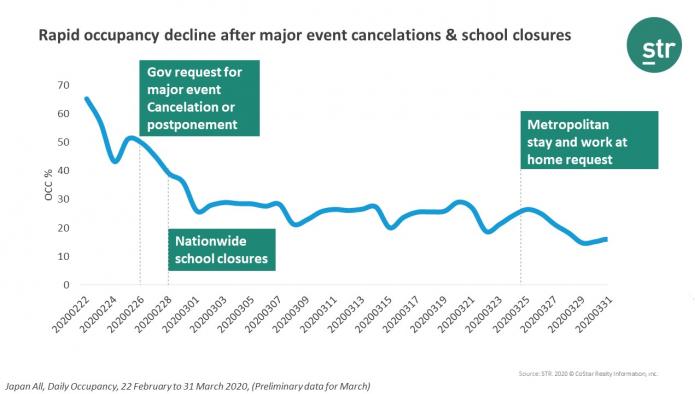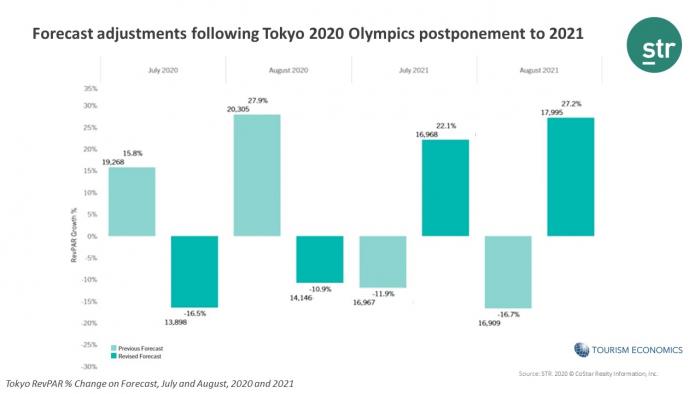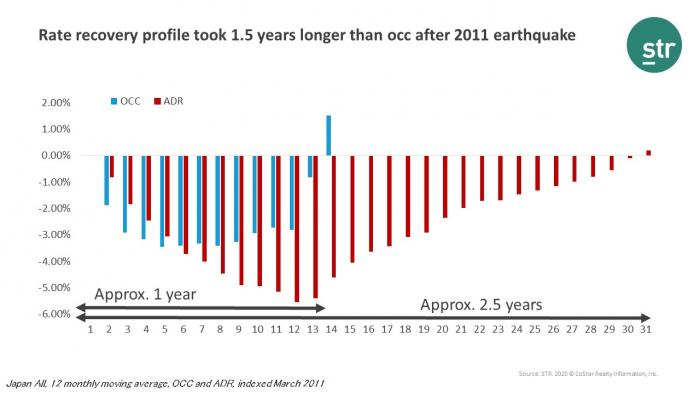March hotel occupancy reaches the lowest monthly average in STR’s Japan database
Despite a decline in demand, Japan hotels reported 64.8% occupancy in February 2020. However, March preliminary data shows that occupancy dropped to 30.5% as the COVID-19 pandemic developed, representing the lowest monthly average in STR’s Japan database.
Event cancellations and postponements played their part, as did school and attraction closures
Government instructions to cancel or postpone major events affected hotel performance, as have the restrictions on domestic travel and encouragement to work remotely. On 28 February, nationwide school closures were also announced and coincided with the decision to close major amusement parks, including Tokyo Disney Resort and Universal Studio Japan.


